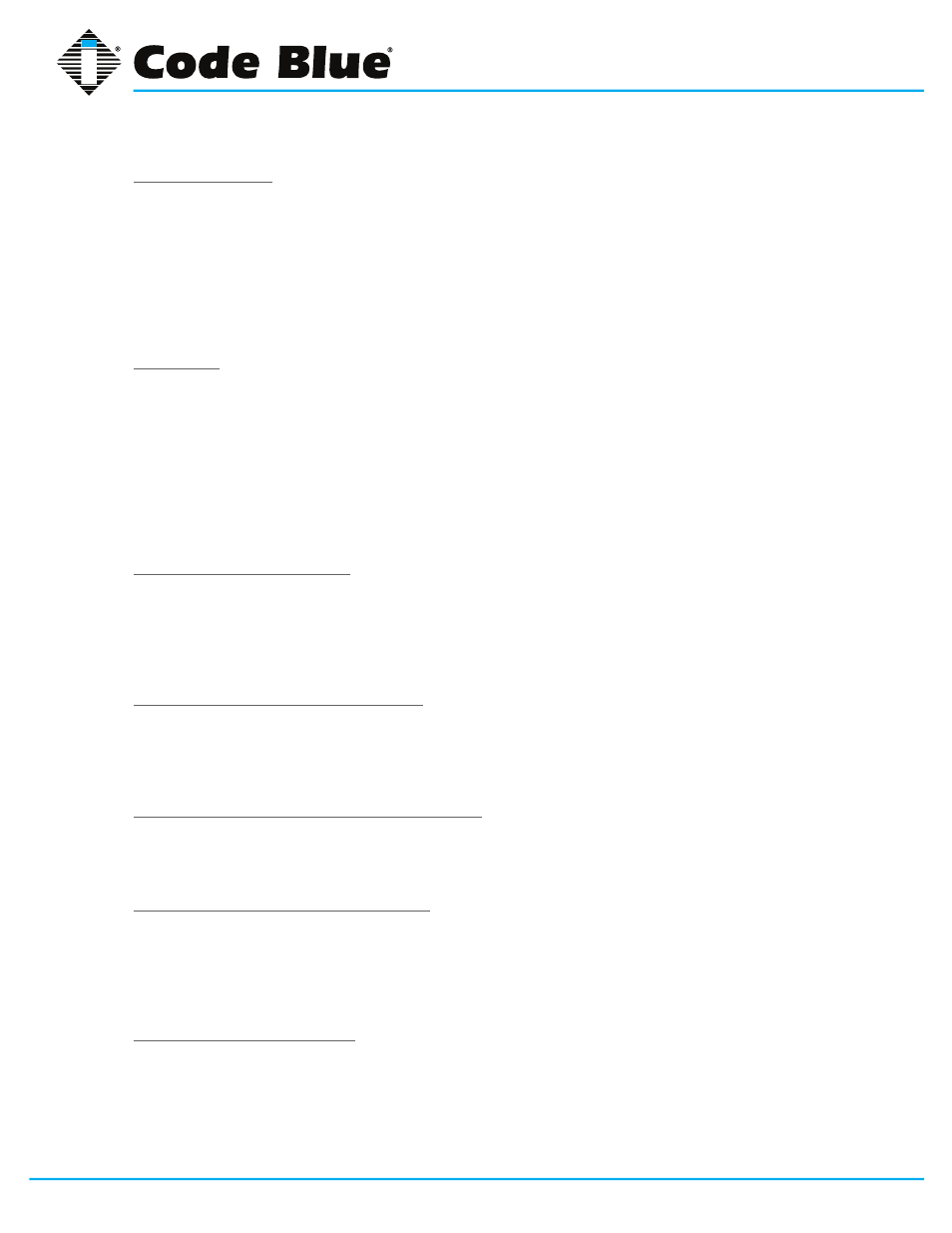Toolvox® x3, Administrator guide – Code Blue TOOLVOX X3 User Manual
Page 110

Code Blue
•
259 Hedcor Street
•
Holland, MI 49423 USA
•
800.205.7186
•
www.codeblue.com
GU-154-F
page 110 of 132
ToolVox® X3
Administrator Guide
Mail system name
This option identifies the mail server system in use to connecting users. It will be used in the
smtpd_banner, which is sent in Received: headers, the SMTP greeting banner and in bounced mail.
Security experts who promote security through obscurity suggest anonymizing all server software to
prevent potential crackers from identifying the software on the server. It is probably not the best use
of an administrator’s time or effort in most environments, however, and many other security tactics
are more effective and won’t negatively impact the ability to track software problems. This option
correlates to the mail_name directive and defaults to Postfix.
Mail owner
This option specifies the owner of the Postfix mail queue and most of the Postfix daemon processes.
This user should be unique on the system and share no groups with other accounts or own any
other files or processes on the system. After binding to the SMTP port (25), Postfix can drop root
privileges and become the user specified here for all new daemon processes. If the Postfix daemon
is ever compromised, the exploiter will only have access to mail and a few other files. Obviously it is
good to avoid this as well, but it is certainly better than a root exploit, which would allow the exploiter
to access and alter anything on the system. This option correlates to the mail_owner directive and
defaults to postfix.
Official mail system version
This paremeter configures the version number that will be reported by Postfix in the SMTP greeting
banner, among other things. This correlates to the mail_version directive and defaults to the version
of Postfix that is installed. Once again, security-by-obscurity promoters may encourage obfuscation
of this value.
Time to wait for next service request
A Postfix daemon process will exit after the time specified here if it does not receive a new request
for service during that time. This option corresponds to the max_idle directive and defaults to 100
seconds. This directive does not impact the queue manager daemon process.
Max service requests handled before exiting
This option configures the maximum number of requests that a single Postfix daemon process will
answer before exiting. This option configures the max_use directive and defaults to 100.
Internet hostname of this mail system
This option specifies the Internet host name of the mail server. By default, this value will be set to
the fully qualified host name of the server, as determined by a call to gethostname(). This option
sets the $myhostname variable, which is used in the defaults to many other options. This option
correlates to the myhostname directive.
Local Internet domain name
This option corresponds to the mydomain directive and defaults to the contents of the $myhostname
variable minus the first component. This option defines the $mydomain variable and is used in a
number of other configuration option defaults.